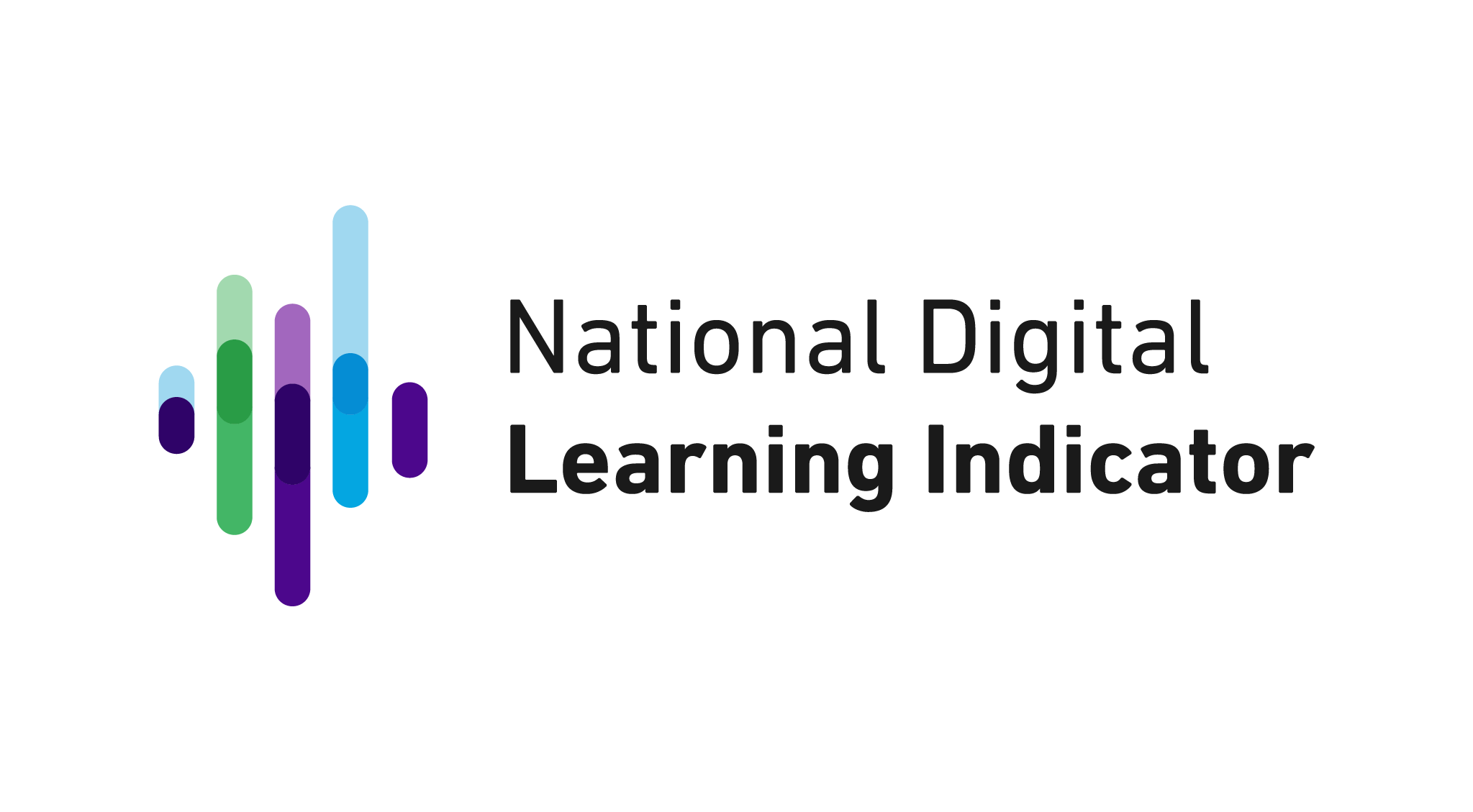
The National Digital Learning Indicator is an annual indicator that reviews the progress of digital learning in the Kingdom of Saudi Arabia, its responsiveness to the requirements, and its suitability for the rapid development and change of educational technologies. In addition, it contributes to enhancing the quality of digital learning outcomes in the government, private, and non-profit sectors. It supports the process of enabling and accelerating digital transformation and creating innovative and sustainable solutions for a better future. This indicator is part of NeLC's efforts to control the quality, improve the efficiency and credibility of digital learningin the Kingdom.
Objectives
- Identify the practices and technologies available by the institution to the employees to facilitate access to eLearning content.
- Follow up with the institution’s approach in measuring the effectiveness of digital programs, their efforts in expenditure efficiency, operation, and management of learning resources.
- Measure the institution’s efforts in enhancing the learning experience and improving outcomes through the employment of technologies, tools, learning methodologies, interaction, and assessment.
- Identify the new skills acquired by the institution’s employees and follow up on the assessment of the learning experience within the institution, to identify the results and impact of eLearning.
- Enrich the eLearning database in the Kingdom.
- Facilitate access to eLearning data in the Kingdom for specialists and researchers.
Target groups
All institution in the kingdom, including government, private, and non-profit sectors.
The joining process of the Digital Learning includes
Apply
2023-12-03
Review
2023-12-17
Approve
2023-12-24
Results
2023-12-31
Digital Learning Indicator fields
It aims to identify the practices and technologies available by the institution to the employees to facilitate the access to eLearning content.
:Subfields
Availability
- The required technologies, systems, and applications
Enabling
- Accessibility to learning resources
- Accessibility to a dedicated and integrated learning management system
Accessibility Support
- Individuals with disabilities
- Support and communication team
- Guide and help centre
It aims to recognize the institution's approach in measuring the effectiveness of digital programs, its efforts in the efficiency of expenditure, operation and management of learning resources, as well as the scalability of programs, and the ability to adapt and customize programs according to individual learners' abilities and qualifications.
:Subfields
Expenditure Efficiency
- Estimated annual budget for activation and development
- Annual expenditure of activation and development
Operating Efficiency
- Qualifications of the training team and program providers
- Training and development of the training team and program providers
- Qualifications of the technical and support team
- Training and development of technical and support team
Resources Efficiency
- Use and storage of digital resources
- Review and update of digital resources
Measuring and Analysing Effectiveness
- Methodologies for measuring effectiveness
- Use of analytical tools and results
It aims to recognize the efforts of the institution in enhancing the learning experience and improving outcomes through the employment of technologies, tools, learning methodologies, interaction, and assessment, to make digital learning more attractive and effective and create an innovative learning experience with positive outcomes.
Subfields
Activation
- Innovative methodologies and technologies
- Research teams
Investment
- Allocating an annual budget for innovation in learning technologies
- Partnership with local and global institutions
It aims to identify the tangible results and impact of digital learning by identifying the new skills acquired by the institution’s employees, how well they are empowered in their professional/personal lives, and how they positively assess their learning experience. In addition to recognizing the institution's efforts in contributing to human capital development through digital learning.
Subfields
Development of the eLearning sector
- Research and development
- Number of open resources
- Number of eLearning programs
Development of human capabilities
- Number of graduates and certificates issued
- Acquired skills
Impact Measurement
- Learner satisfaction
- Mechanism for measuring outcomes
FAQs
:The indicator classifies institutions as
:Educational
:Non-educational
The main activity is not to provide education or trainingEach dimension is verified by answering several questions and requirements to be provided, with an option to update the requirements and answers by the institution
Any institution inside the Kingdom can join the National Indicator and contact via email: national-indicator@elc.edu.sa
The answers are directly reflected in the institution's dashboard, while the results associated with the supporting files are reviewed and validated by the National eLearning Indicator team and, if needed, communicate with the responsible representative to enquire about some of the answers provided prior to being approved
:The Indicator reviews the ranking of institution in the National Classification of Digital Learning in Accessibility, covering the following
- Percentage and number of educational institutions subjected to a program and institution licensing by the National eLearning Center
- Percentage of institutions that employ techniques, applications, and platforms in the learning process
- Number of international and Arabic massive educational platforms that benefit the institutions in the development of human capabilities, and most notably
- Percentage and number of institutions that have a massive learning platform
- Percentage and number of institutions that provide technical solutions for people with disabilities and the most prominent technical solutions provided
- Percentage and number of institutions providing their own learning management system
- How the Kingdom's learning management systems meet global accessibility standards
:The Indicator reviews the ranking of institutions in the National Classification of Digital Learning in Efficiency and Effectiveness, covering the following
- Percentage of institutions that allocate a budget to support eLearning
- Total expenditures in human capacity development through eLearning
- Return on investment in the Kingdom's eLearning sectors
- Percentage of institutions that provide support to instructors and the amount of support provided by them to increase operational efficiency through training of instructors and technical support team
- Percentage and number of institutions that conduct learning analyses for decision-making
- The institution’s methodology in measuring the effectiveness of the programs offered in the eLearning mode
- The institution’s efforts to ensure the efficient use of digital learning resources
- Sources on which institutions rely on to provide digital learning resources
:The indicator reviews the ranking of institutions in the National Classification of Digital Learning in Innovation, covering the following
- The latest methodologies and techniques used in eLearning in the Kingdom and their utilization ratio
- Innovative strategies used to encourage the learner's interaction in the eLearning program and its utilization ratio
- Guidance and efforts of institutions in innovation in education techniques and digital content
:The indicator reviews the ranking of institutions in the National Classification of Digital Learning in Impact, covering the following
- Total number of learners enrolled in eLearning programs in the Kingdom
- Number of training courses, diplomas and university degrees offered in the eLearning mode
- The total number of certificates issued by the programs offered the eLearning mode
- Skills acquired during 2023 from all programs offered in the eLearning mode and tailored to the needs of the labor market
- Percentage of institutions' contribution to human capacity development in the National eLearning Platform and Open Educational Resources Platform



